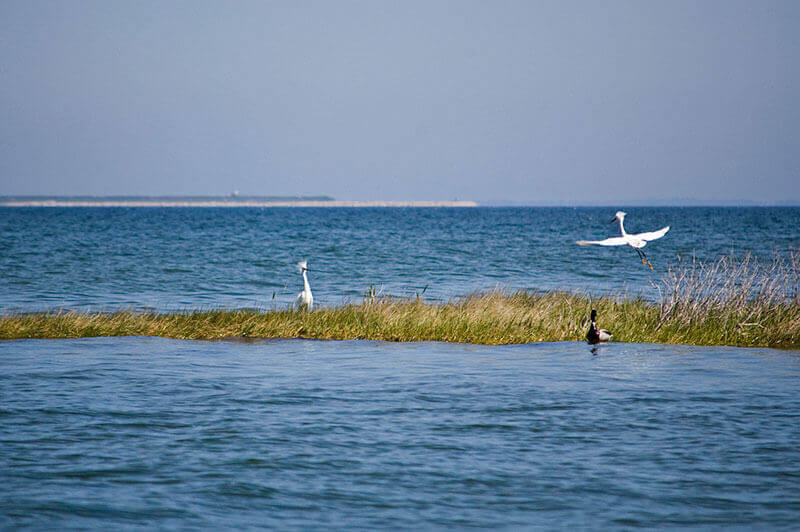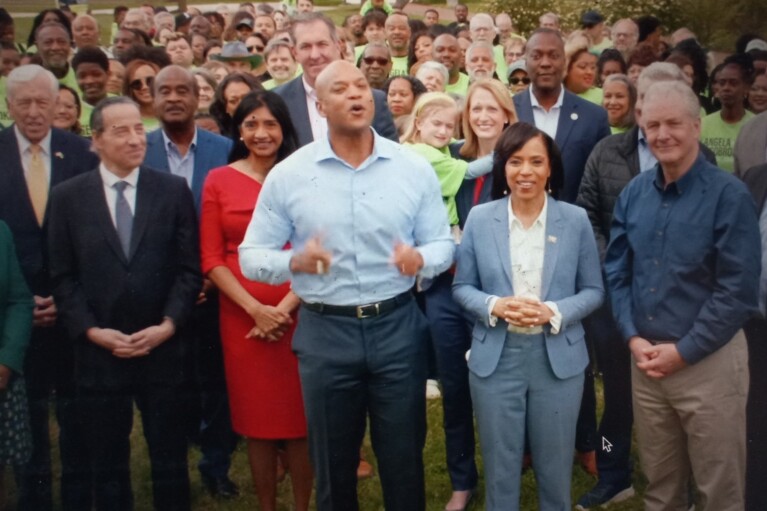Environmentalists Bash Leaders of Chesapeake Bay States for Backsliding

Leaders from six Chesapeake Bay watershed states, the District of Columbia, the Chesapeake Bay Commission and the U.S. Environmental Protection Agency have failed to address recent reports highlighting how some Bay states are not on track to meet their pollution reduction goals by 2025, environmental groups said Tuesday.
The Chesapeake Executive Council, which includes the leaders of Maryland, Virginia, Delaware, Pennsylvania, West Virginia, New York, D.C. and the EPA, met virtually Tuesday for its annual meeting. Gov. Lawrence J. Hogan Jr. (R) announced that the council had adopted a diversity statement, pledging to improve equity and a culture of inclusion throughout the states’ efforts to clean up the Bay.
“Just as natural ecosystems depend on biodiversity to thrive, the long-term success of the Chesapeake Bay restoration effort depends on the equitable, just and inclusive engagement of all communities living throughout the watershed,” the council’s statement said in part. “…For this effort to be successful it will require us to honor the culture, history and social concerns of local populations and communities.”
Hogan then turned the gavel over to Gov. Ralph S. Northam (D) of Virginia.
“Over my past three years as chair, we have worked together to implement real, bipartisan, common sense solutions to the challenges facing the Chesapeake Bay, and the results speak for themselves,” Hogan said. “Maryland remains fully committed to this historic partnership as we continue making strides to preserve this national treasure.”
However, the leaders did not address reports issued in the last few days by the Environmental Integrity Project and the Chesapeake Bay Foundation, both of which found that Maryland and Pennsylvania are regressing on their efforts to mitigate stormwater pollution runoff into the Bay. Both reports found that Pennsylvania in particular was far from meeting its pollution reduction goals by 2025.
“Once again this year, Bay restoration leaders ignored the elephant in the room. Pennsylvania’s plan to meet the goals that all agreed on is woefully inadequate and implementation is seriously off-track,” Chesapeake Bay Foundation President Will Baker said in a statement.
“Unless the Commonwealth finds a way to meet its commitments, the investments that the other Bay states are making will improve local water quality, but the Bay will not be restored,” he continued.
In 2010, the EPA established the Chesapeake Bay Total Maximum Daily Load (TMDL), which requires Bay states to implement plans that would reduce nitrogen, phosphorus and sediment pollution into the Bay by 2025. The federal agency is responsible for establishing accountability measures to ensure that each state meets its cleanup commitments.
A report released last week by the Chesapeake Bay Foundation found that although Maryland is on track to achieving its 2025 pollution reduction goals, it must focus more on reducing urban and suburban stormwater pollution runoff, as this will be Maryland’s second largest source of nitrogen pollution by 2025.
Although Pennsylvania has successfully reduced pollution from wastewater treatment plants, the report found that it needs to focus on reducing pollution from agriculture, which makes up 93% of the total remaining nitrogen reduction necessary to meet pollution reduction goals by 2025.
Another report by the Environmental Integrity Project released Monday found that Maryland’s 2019 Chesapeake Bay cleanup plan allows 1.5 million more pounds of nitrogen pollution from urban and suburban stormwater runoff into the Bay by 2025, or 20% more pollution, than its 2012 commitment.
Similarly, Pennsylvania’s Chesapeake Bay cleanup plan will allow 7 million more pounds of nitrogen pollution from stormwater runoff by 2025, a 87% increase from its 2012 plan.
“It was disappointing that today’s annual meeting of Chesapeake regional governors – only two of whom even bothered to show up – did not discuss the Bay’s serious pollution problems with any candor or depth, and did not even bring up the backsliding by Pennsylvania and Maryland on controlling urban and suburban stormwater pollution,” said Tom Pelton, spokesman for the Environmental Integrity Project.
“Governor Hogan praised the ‘incredible progress’ the states have made in cleaning up the Bay. But, in fact, the University of Maryland Center for Environmental Science’s most recent report card on the Bay showed that the estuary’s overall health rated a terrible 44 out of 100 in 2019, which was an even worse score than the 47 out of 100 score in 2010, when the current Bay cleanup efforts began,” Pelton continued.
The leaders from the Chesapeake watershed also did not mention Maryland, Virginia and the District of Columbia’s recent declaration that they intend to sue the EPA for its failure to enforce state pollution reduction plans, specifically Pennsylvania and New York.
“Once again, Pennsylvania’s progress has fallen short, and, once again, EPA has failed to hold them accountable. This should not be surprising, since this administration has spent the past three and a half years rolling back environmental regulations and enforcement mechanisms,” Kristen Reilly, director of Choose Clean Water Coalition, said in a statement.
“We would like to remind EPA that their role in this restoration effort is to hold the states to the commitments they have made to clean their local rivers, streams and ultimately the Chesapeake Bay.”




 Creative Commons Attribution
Creative Commons Attribution